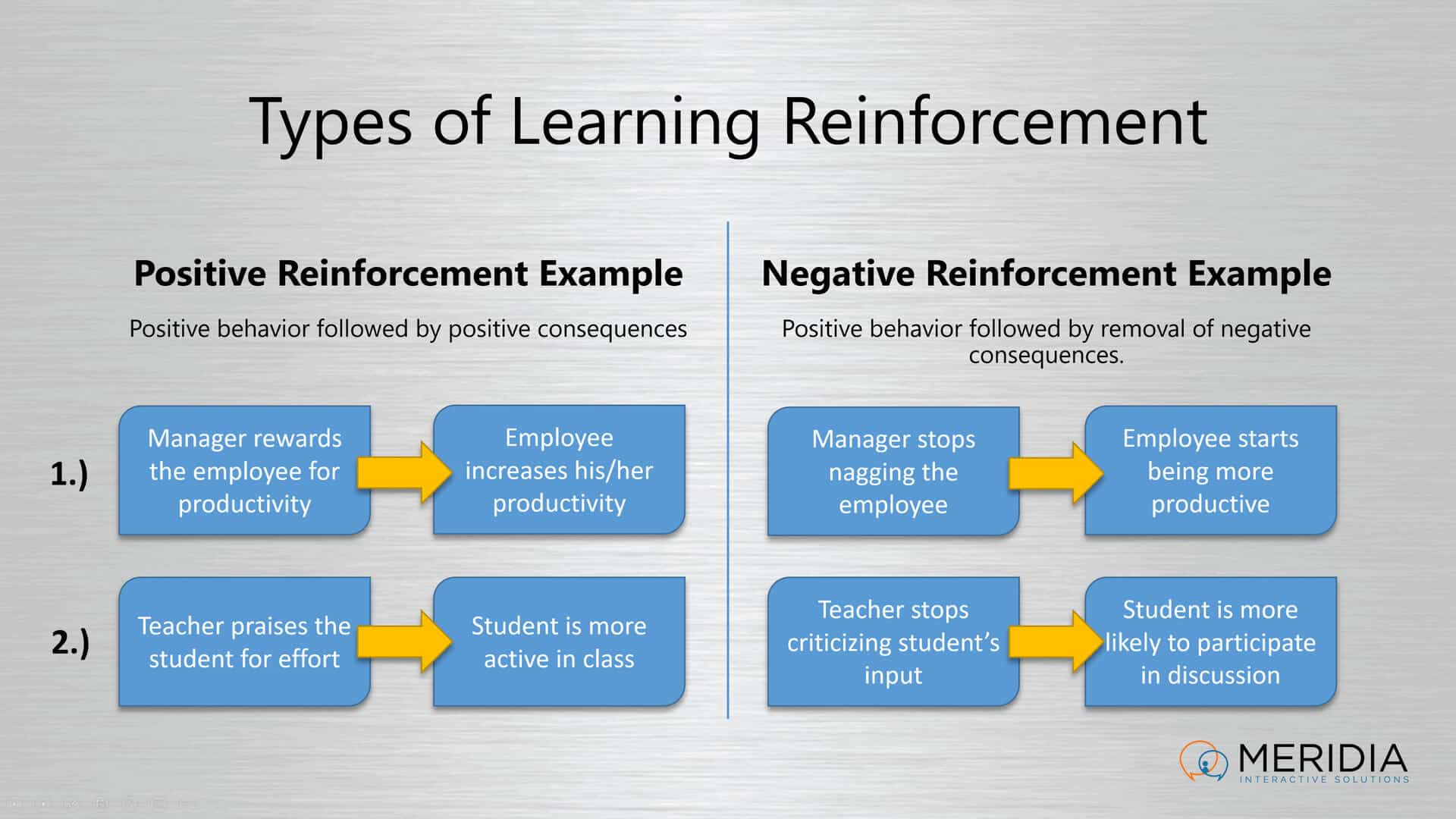Negative Reinforcement In The Classroom

Negative reinforcement and positive reinforcement are two of those terms that originated in science, yet are thrown around casually in conversation so much that most people misuse them all the time. Most people assume that negative reinforcement is very similar to punishment, but they actually have very different meanings.
The definition is actually a bit complicated, so let's go through it step by step...
Differential reinforcement involves providing reinforcement to one response class and not providing – or withholding – reinforcement for another response class (Cooper, Heron, & Heward, 2014). The foundational understanding of positive and negative classroom reinforces. Finally, we discuss the implementation of alternatives that have successfully worked in the classroom, which have created healthier learning environment. The “Get-Tough” Legacy Historically in the United States, schools have been expected to be learning.
Let's start with the meaning of 'reinforcement'. According to the science of psychology, reinforcement is when a person's behavior produces a result that they consider to be agreeable. The agreeable result encourages them to repeat the same behavior over and over. There is no 'disagreeable reinforcement'.
That would just be called punishment.
Reinforcement always produces a result that is agreeable to the subject.
Now, let's define the terms 'positive' and 'negative'. To us, the term positive usually means something good, and the term negative usually means something bad.
But, in science, positive means that something is added, and negative means that something is taken away.
So, let's put the two terms together. Reinforcement is when something agreeable happens. Negative is when something is taken away.
Therefore, negative reinforcement is when a person's behavior causes something to be taken away, which produces an agreeable result. The agreeable result encourages them to repeat the same behavior over and over.
Examples of Negative Reinforcement in Action

Let's look at a real world example of negative reinforcement...
Let's say your neighbors are noisy. When you try to sleep at night, they always wake you up. You start wearing earplugs at night, and now you can sleep.
Now, you wear earplugs every night.
Your behavior (putting in earplugs) causes something to be taken away (the noise from the neighbors), which produces an agreeable result (sleep). This agreeable result encourages you to repeat the same behavior over and over (wearing the earplugs every night).
Many more examples of negative reinforcement in practice can be found here.
This is where the confusion comes from, because if taking something away produces an agreeable result, then the thing that was taken away must have been bad. So, it's easy to assume that the word 'negative' is referring to the bad thing, rather than the taking away of something.
As you can see, the scientific definitions of negative and positive reinforcement, as they were conceived by behavioral scientist B.F. Skinner, are very different from their current colloquial uses.
Negative Reinforcement In The Classroom Examples
How Negative Reinforcement is Used in the Classroom
It is very possible to use negative and positive reinforcement to encourage different behaviors in adults and children in the classroom or in an e-learning environment. Again, these terms are not synonymous with punishment and praise.
To use negative reinforcement in the classroom, identify the behavior you'd like to reinforce in your students. Listening quietly to the lesson, for example, in a traditional classroom setting.
When the students listen quietly to the lesson, reward them by canceling the homework assignment for that night. In the future, the students may listen quietly because it has previously resulted in their homework assignment being canceled.
Negative reinforcement is different then rewarding students with candy or good grades, for example, because you are removing something they don't want instead of giving them something they do want.
Positive And Negative Reinforcement In The Classroom Examples
Using negative reinforcement, in some ways, is one of the easiest and most sustainable forms of behavioral management. With positive reinforcement or punishment, you are constantly adding positive and negative stimuli.
Negative reinforcement is all about subtraction.
You start with a baseline that is disagreeable to the student, but with the intention of moving towards an agreeable situation as they earn it.
That said, you may not want to go around telling people how much you love negative reinforcement. At least not without explaining which definition you're talking about.